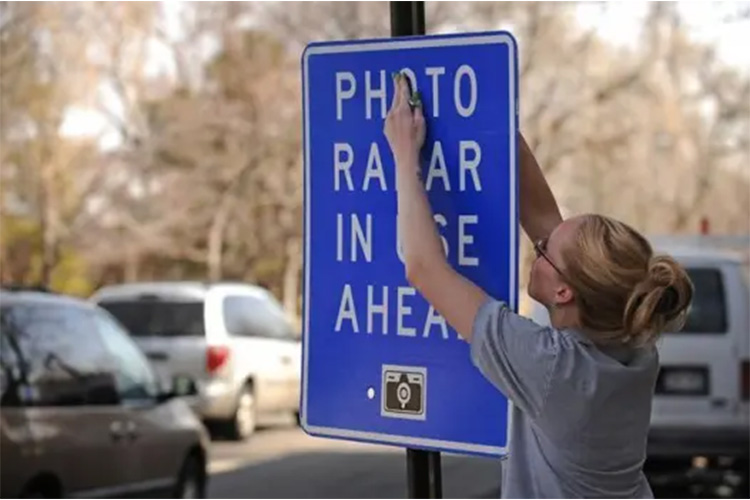
New technologies and road systems have been applied to prevent speeding. photo by Helen H. Richardson
Annoyed about that new speeding ticket? It’s not your fault, and here’s why.
As you are driving, a blinding flash stunts your vision momentarily. You experience a horrifying realization that a speed radar van has photographed you. You feel afraid and helpless about whether or not you will be ticketed. This is a reality for so many people because the inconsistency of speed limits, traffic control systems, and ticketing creates a recipe for disaster.
In an attempt to make streets safer for pedestrians, many areas have lowered their speed limits. One way traffic controllers set speed limits is through the 85 percentile rule. This rule establishes speed limits at or below the average speed 85% of drivers can attain during good weather conditions. This process, however, sets drivers up to fail when driving the set speed limit. Jay Beeber, executive director of Safer Streets L.A., said in an interview with CNBC, “people drive the way the road is built.” So if radar vans ticket individuals going even one mile per hour (mph) above the speed limit, it is still not a fair assessment of the driving conditions.
In Colorado, Class A traffic infractions outline some consequences for speeding and traffic misdemeanors. Driving one to four miles per hour over the speed limit results in a $30 fine plus a $6 surcharge. Five to nine mph over the limit results in a $70 fine plus a $10 surcharge. Twenty to 24 mph over the limit results in a $200 fine, a $32 surcharge, and six Department of Motor Vehicle (DMV) points added to the violator’s license. In Colorado, each driver starts with zero points on their license, and points are added due to traffic infractions until they lose it. Finally, speeding on a bridge results in a $30 fine, a $6 surcharge, and three DMV points. A class two traffic misdemeanor is incurred by going 25 mph or more over the limit, resulting in a fine ranging from $150 to $300, and may also include 10 to 90 days in jail. Six DMV points are added if their speed is less than 40 mph over the limit, and twelve DMV points are added if their speed is above 40 mph.
However, there are some exceptions to being issued a traffic citation. According to 9News, “photo radar can only be used to issue tickets for 11 mph or more over the speed limit. Even if you are flashed by a photo radar van going 39 mph in a 30, you should not receive a ticket.” But this demonstrates an inconsistency. If roads have speed limits above the average attainable speed, individuals will disregard them.
No one wants to feel like an irresponsible driver, yet our traffic control systems set us up for failure. Long stretches of flat roads with few obstacles or curves may lead us to believe it is safe to speed. Ironically, roads with more obstacles are safer because drivers are more cautious and pay more attention.
In an attempt to fix the speeding crisis and protect pedestrians, new technologies and policies have been developed using Access Management (AM) techniques, which manage the design and effectiveness of roads. Some effective road structures include the “road diet,” “roundabouts,” and the “diamond interchange,” to name a few.
Road diets eliminate a lane from each side of traffic to create a center left-hand turn lane and bike lanes on the sides of a street. This allows for better traffic flow and gives more space to bicyclists. However, it does not reduce speeding.
Diamond interchanges periodically allow two directions of traffic to cross over to the left side of a road, which provides easier access to interstates. This system moves high volumes of traffic through an intersection, eliminating the need for left turn signals. Reducing speeds when entering and exiting the highway also prevents left-turn accidents on heavily used interstates.
Lastly, roundabouts (or traffic circles) efficiently slow traffic, despite seeming tedious. While in America, each roundabout has different rules, they keep traffic flowing and slow it in areas that need it most, such as residential areas and school districts. Traffic circles slow traffic with a center island, creating a relatively tight radius around the exit lanes. For a smooth exit from the traffic circle, drivers must slow down. With no traffic lights, roundabouts move continuously so long as drivers yield to vehicles from all directions. Slower speeds and a smoother traffic flow reduce the need for speed radar vans or red light cameras.
Ultimately, traffic tickets are better than getting into an accident or worse, hitting a pedestrian. With this in mind, America should redesign many of its roads to make a safer future for everyone.